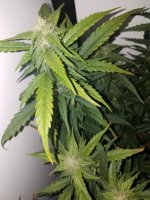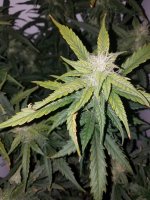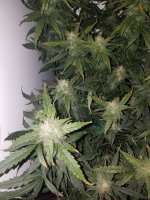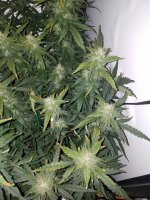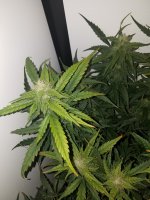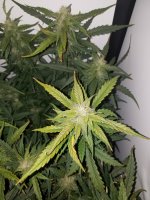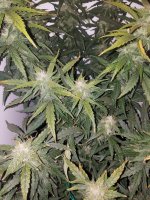AdaminCO
Well-Known Member
Thanks Em. I think I’m on the right track then. I have been letting them dry too much.It sounds like you are watering correctly and you are correct that in flower you really don't want to go quite as dry as you do in veg, at least after stretch is finished. At that point the rapid development of the roots and the rapid growth at the top are finished, and the plant settles into the business of building buds. At this point it is time to start using those roots you developed in veg, to see just how much water you can get the plant to uptake from here on out. You goal is to establish a quicker water cycle, optimally watering every day, or if that is to labor intensive, every other day or at the most a 3 day watering cycle.
The way you flip to this new mode of watering is easy since you probably have a good idea by now how much water it takes to totally saturate the rootball and achieve runoff. Divide that number by how many days interval you have established by then and figure out what your daily water use is. Start watering with this much water, every day, or whatever interval you have decided on, and carefully note whether it takes more or less water than you figured to achieve runoff. The next day, if it takes less water to achieve runoff, you are giving too much, and try to find that magic amount that gets you to runoff each day, while still allowing the container to go mostly moist. You don't want a lot of water weight in there between waterings and you certainly don't want to get to a point where you are waterlogging the plant... but try really hard to figure out what that plant is using each day. If it takes more to achieve runoff than you figured and the plant is going dry between each watering, you are doing good... and just try to keep up with it. Once flowering starts you want to continue giving water/nutes, alternating with each watering, but now instead of only being able to give nutes once or twice a week, you are able to do it 4 or more. More nutes, more water, equals bigger plants.
The spots look like nothing more than a very common calcium deficiency starting up. Add calmag to your nutes and if you are already giving calmag, increase the dosage.





